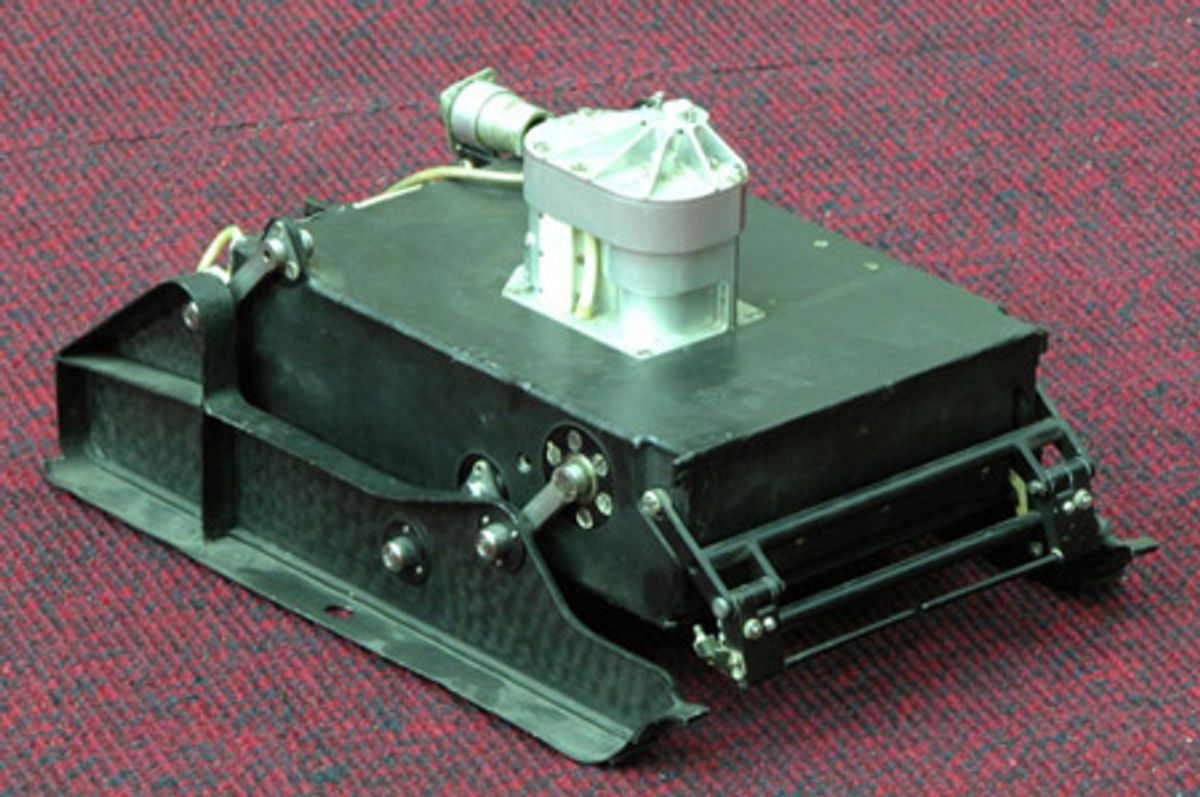Before Curiosity, before Opportunity, before Spirit, and before Sojourner, the very first robot to land on Mars was this little guy, way back in December of 1971. Called PrOP-M, the rover was part of the Soviet Union's Mars-3 mission, which had the potential to deploy the first ever mobile scientific instruments onto the Martian surface.
PROP-M stands for Device Evaluation Terrain - Mars: the acronym, apparently, only works in the original Russian. The robot weighed 4.5 kilos and was just a little bit smaller than a breadbox at 215 x 160 x 60 mm. It was packing a dynamic penetrometer and a radiation densitometer intended to measure soil density, and was tethered to the Mars-3 lander by a power and data cable.
The way that PROP-M was intended to work was that after landing, a signal from Earth would instruct the Mars-3 lander to place the rover on the surface with a robotic arm, like this:
And here's a picture of the arm in action on a mock-up:
Once the rover was on the ground, it moved using two rotating skis or skids. It was autonomous (a necessity because of the time delay between Earth and Mars), and used two very simple impact bars on the front to detect obstacles. If it ran into something, it would back up and turn itself. Every 1.5 meters, the rover was supposed to stop and take a measurement, and the max range (limited by the tether) was 15 meters. The idea was that the rover would wander around in front of the lander, in view of the Mars-3's cameras, sending back measurements:
Simple, adaptable, and robust.
Sadly, PROP-M never got a chance to do any exploring. The Mars-3 lander separated from its spacecraft on December 2, 1971, and entered the Martian atmosphere. After aerobraking with a heat shield, the lander deployed a parachute to slow itself down, and then when within range of the ground fired its retrorockets and made a successful landing on the surface, impacting the ground at about 20 meters per second and cushioning itself with shock-absorbing foam. Four petals on top of the capsule opened and the lander began to transmit data 90 seconds after landing, but all contact was lost just 20 seconds later, before the PROP-M rover had a chance to deploy.
It's thought that maybe the lander was damaged on descent by a massive dust storm that was raging on Mars at the time, but it's also possible that the orbiter (which was acting as a communications relay) was the problem. Or there's always the angry Martians hypothesis. We'll never know exactly what happens, at least not until one of the current rovers makes it to the Mars-3 landing site to check things out, that is.
If you want to see a PROP-M rover for yourself, there's one on display at a museum in St. Petersberg.
Via [ Cybernetic Zoo ] and [ NASA ]
Evan Ackerman is a senior editor at IEEE Spectrum. Since 2007, he has written over 6,000 articles on robotics and technology. He has a degree in Martian geology and is excellent at playing bagpipes.







